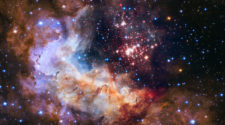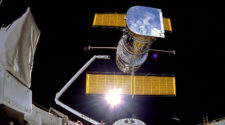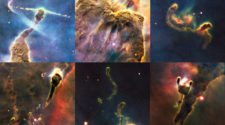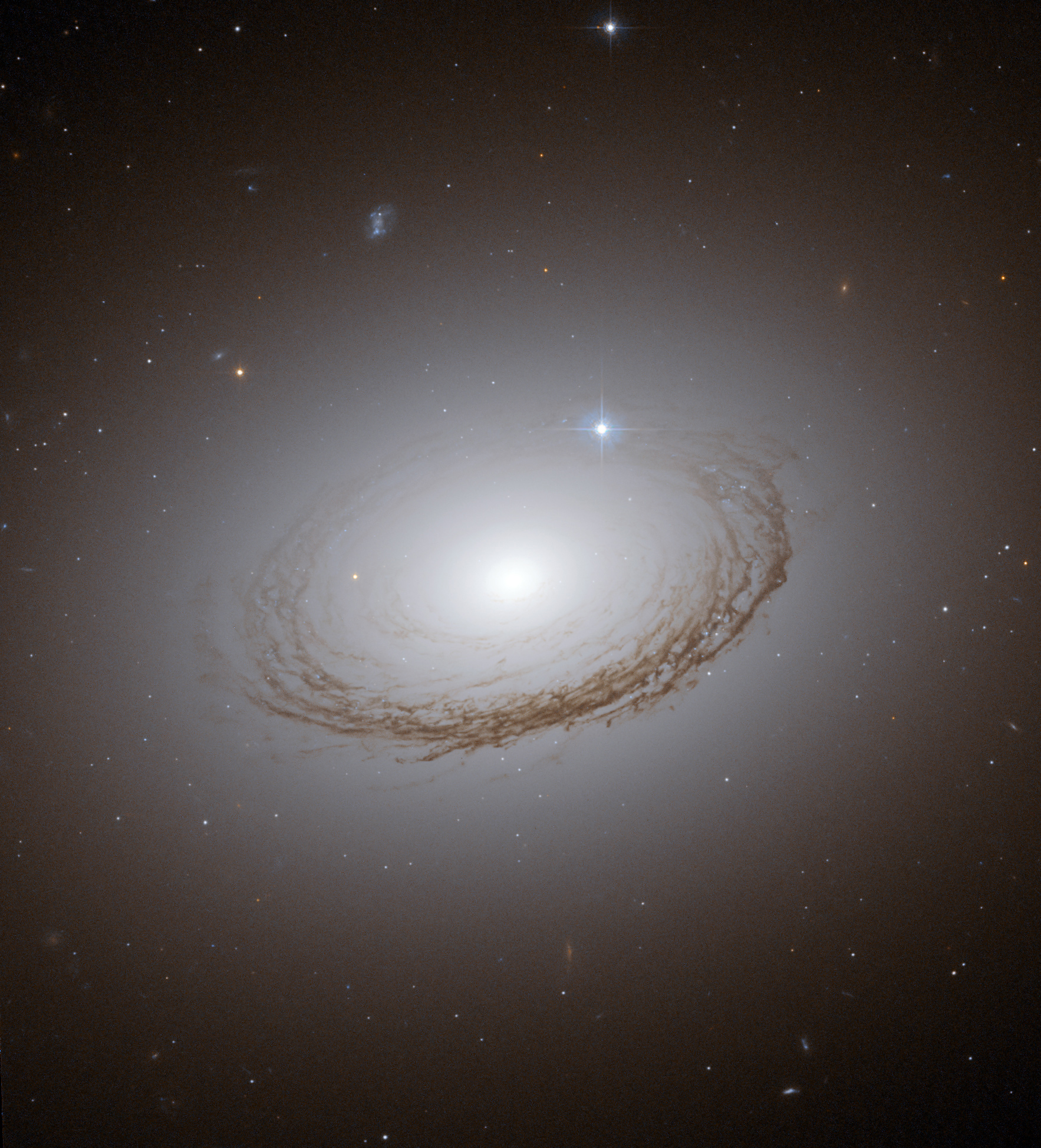
31. Backlit dust lanes in NGC 7049
The Hubble Space Telescope captured this image of NGC 7049 in the constellation of Indus, in the southern sky. A family of globular clusters appears as glittering spots dusted around the galaxy halo. Astronomers study the globular clusters in NGC 7049 to learn more about its formation and evolution. The dust lanes, which appear as a lacy web, are dramatically backlit by the millions of stars in the halo of NGC 7049.
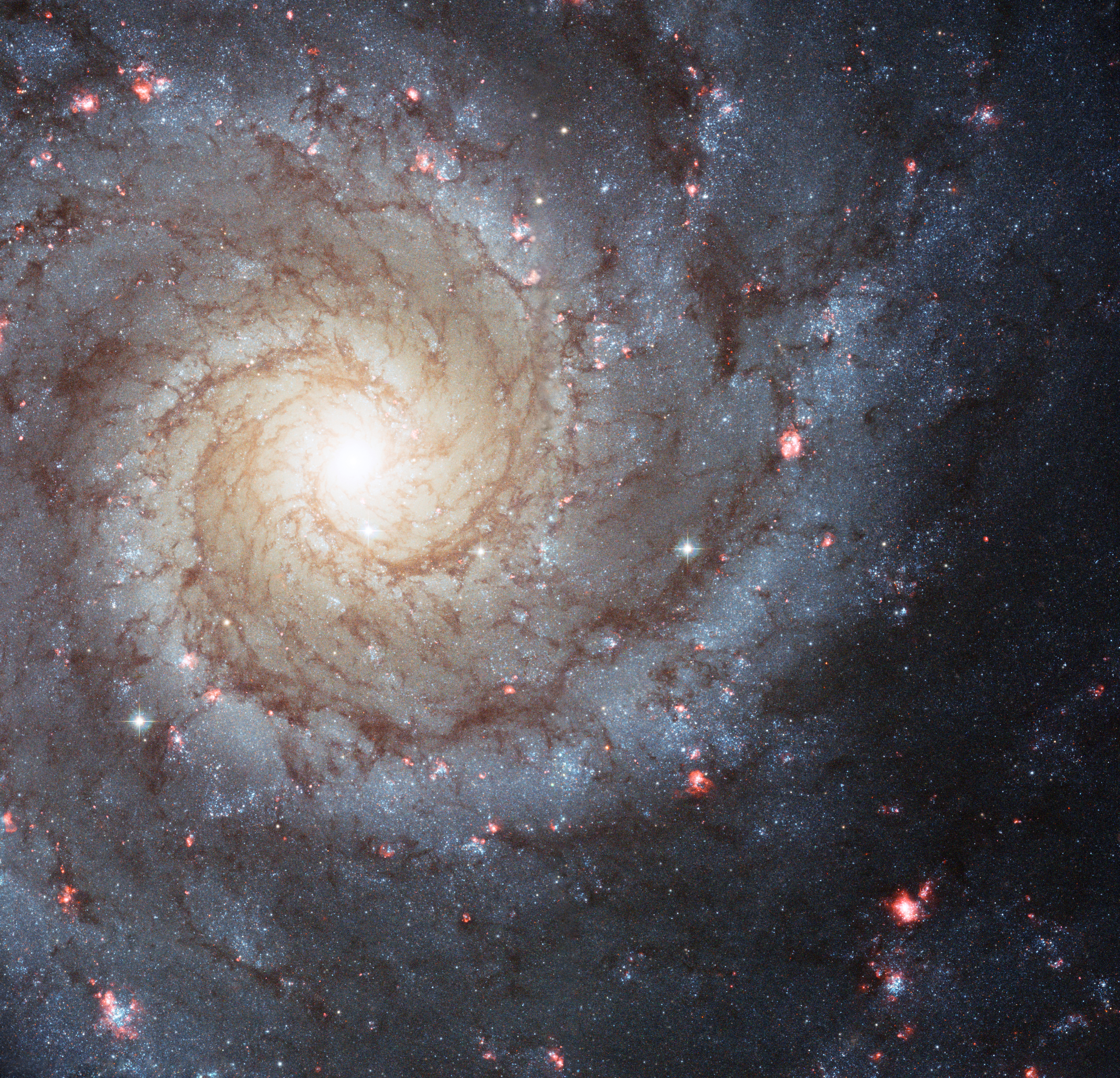
32. Holiday cheer of galaxy M74
In this Hubble image of the galaxy M74 we can also see a smattering of bright pink regions decorating the spiral arms. These are huge, relatively short-lived, clouds of hydrogen gas which glow due to the strong radiation from hot, young stars embedded within them; glowing pink regions of ionized hydrogen (hydrogen that has lost its electrons). These regions of star formation show an excess of light at ultraviolet wavelengths and astronomers call them HII regions.
“By far my favorite image (and I know I’m biased here) is the Bullet Cluster image. I was directly involved with the research, and with a powerful combination of Hubble and Chandra we have shown that dark matter exist, and have directly measured its properties for the first time. Dark matter, mysterious stuff that makes up 25% of the universe turned out to be very anti social. Or in the words of Sean Caroll, ‘Most of the Universe can’t even be bothered to interact with you.’ And that just means that it is absolutely fascinating.”
Marusa Bradac
Associate Professor
University of California Davis
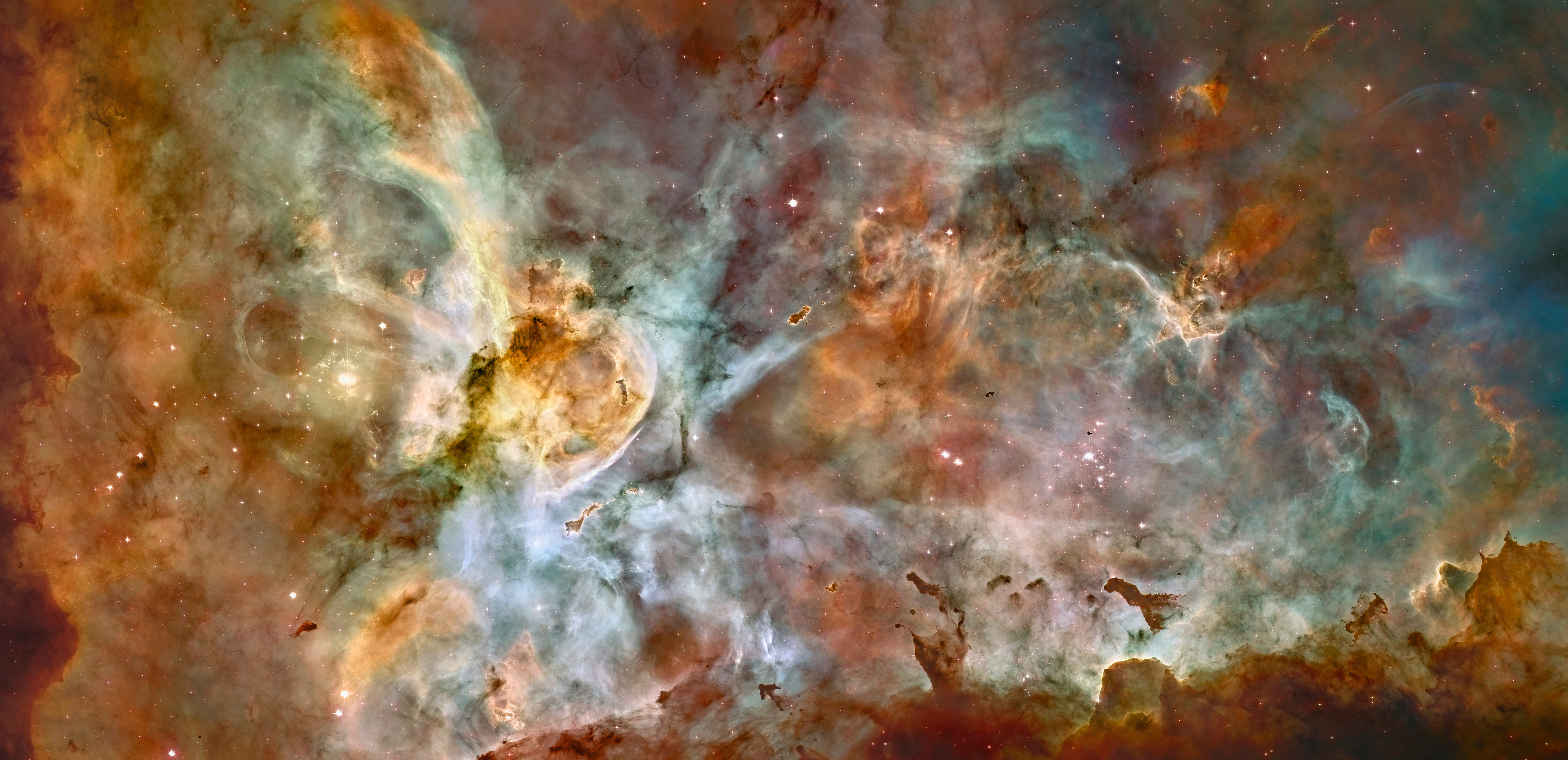
33. Star birth in the extreme
Hubble’s view of the Carina Nebula shows star birth in a new level of detail. The fantasy-like landscape of the nebula is sculpted by the action of outflowing winds and scorching ultraviolet radiation from the monster stars that inhabit this inferno. In the process, these stars are shredding the surrounding material that is the last vestige of the giant cloud from which the stars were born. The immense nebula is an estimated 7,500 light-years away in the southern constellation Carina the Keel (of the old southern constellation Argo Navis, the ship of Jason and the Argonauts, from Greek mythology).
This image is a mosaic of the Carina Nebula assembled from 48 frames taken with Hubble’s ACS. The images were taken in the light of ionized hydrogen. Colour information was added with data taken at the Cerro Tololo Inter-American Observatory in Chile. Red corresponds to sulfur, green to hydrogen, and blue to oxygen emission.
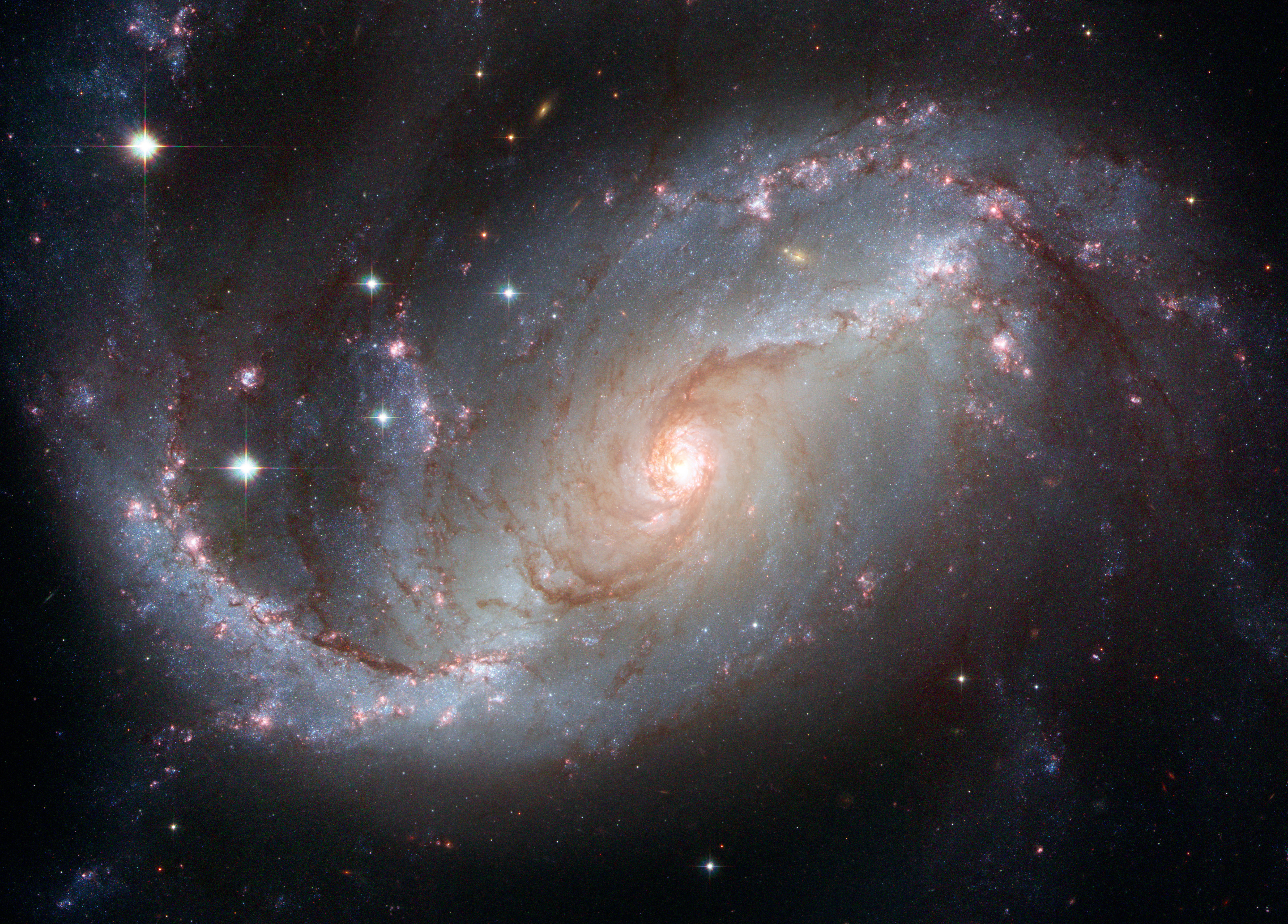
34. Stellar nursery in the arms of NGC 1672
The barred spiral galaxy NGC 1672, showing up clusters of hot young blue stars along its spiral arms, and clouds of hydrogen gas glowing in red. Delicate curtains of dust partially obscure and redden the light of the stars behind them. NGC 1672’s symmetric look is emphasised by the four principal arms, edged by eye-catching dust lanes that extend out from the centre.
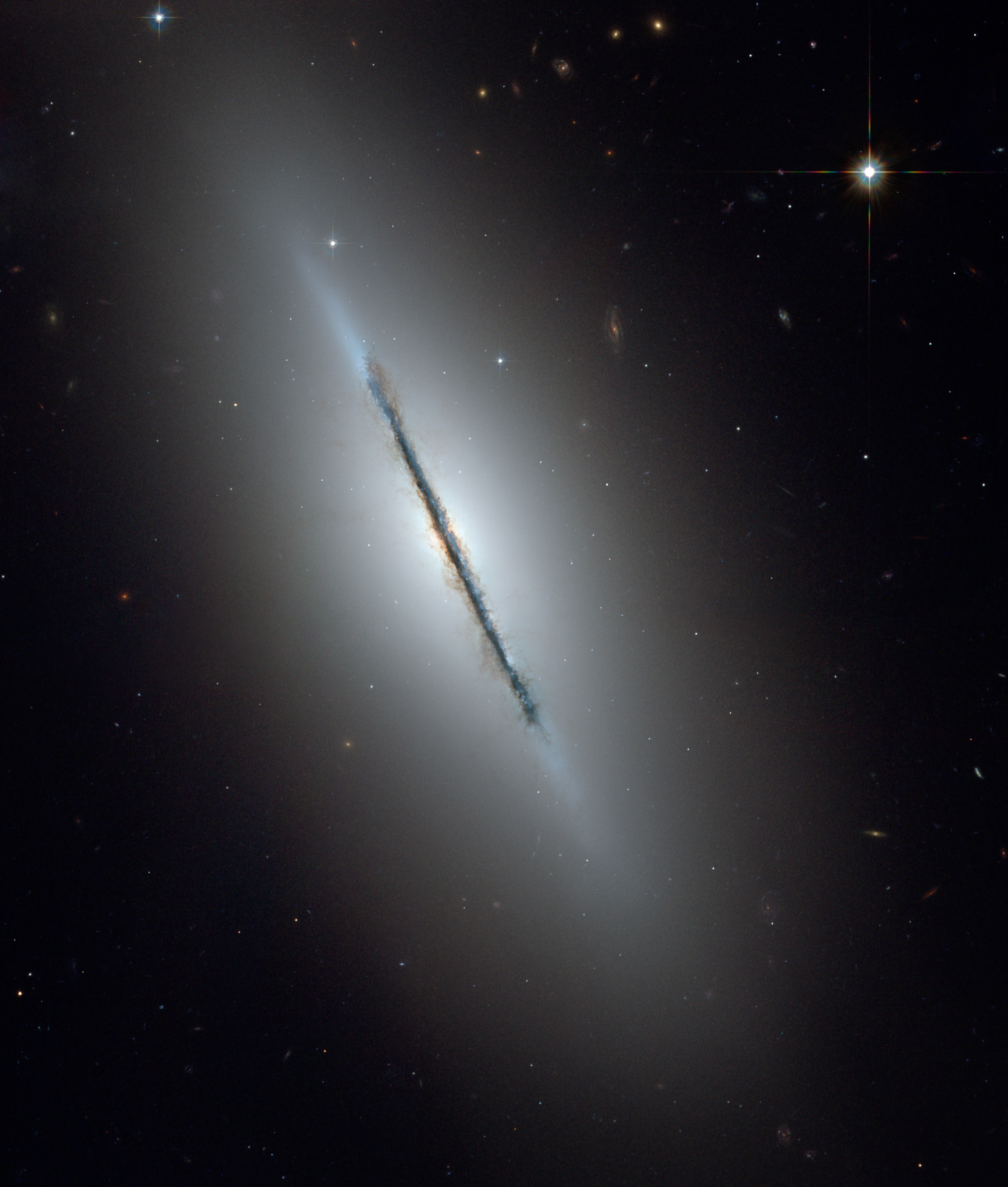
35. Edge-on view of NGC 5866
This is a unique view of the disk galaxy NGC 5866 tilted nearly edge-on to our line-of-sight.
Hubble’s sharp vision reveals a crisp dust lane dividing the galaxy into two halves. The image highlights the galaxy’s structure: a subtle, reddish bulge surrounding a bright nucleus, a blue disk of stars running parallel to the dust lane, and a transparent outer halo.
Some faint, wispy trails of dust can be seen meandering away from the disk of the galaxy out into the bulge and inner halo of the galaxy. The outer halo is dotted with numerous gravitationally bound clusters of nearly a million stars each, known as globular clusters. Background galaxies that are millions to billions of light-years farther away than NGC 5866 are also seen through the halo.
“Our favorite image is one not even in our own field: it’s the picture of Omega Centauri, the largest globular cluster in the Milky Way.
“The color composite early release image that was obtained with WFC3 shortly after it was installed in 2009 was amazing: the stars are so densely packed that in ground-based images, the stars are all blended together. But in the WFC3 image, you can see black space between the stars, you can see all the way through the cluster.
“In the color composite, you can easily pick out the relatively rare red giants and blue horizontal branch stars. It’s simply stunning.”
Dr. Bradley M. Peterson and Dr. Gisella De Rosa
(Peterson) Professor and Chair of Astronomy, Ohio State University, Columbus, Ohio
(De Rosa) Visiting Astronomer, Space Telescope Science Institute, Baltimore, Maryland
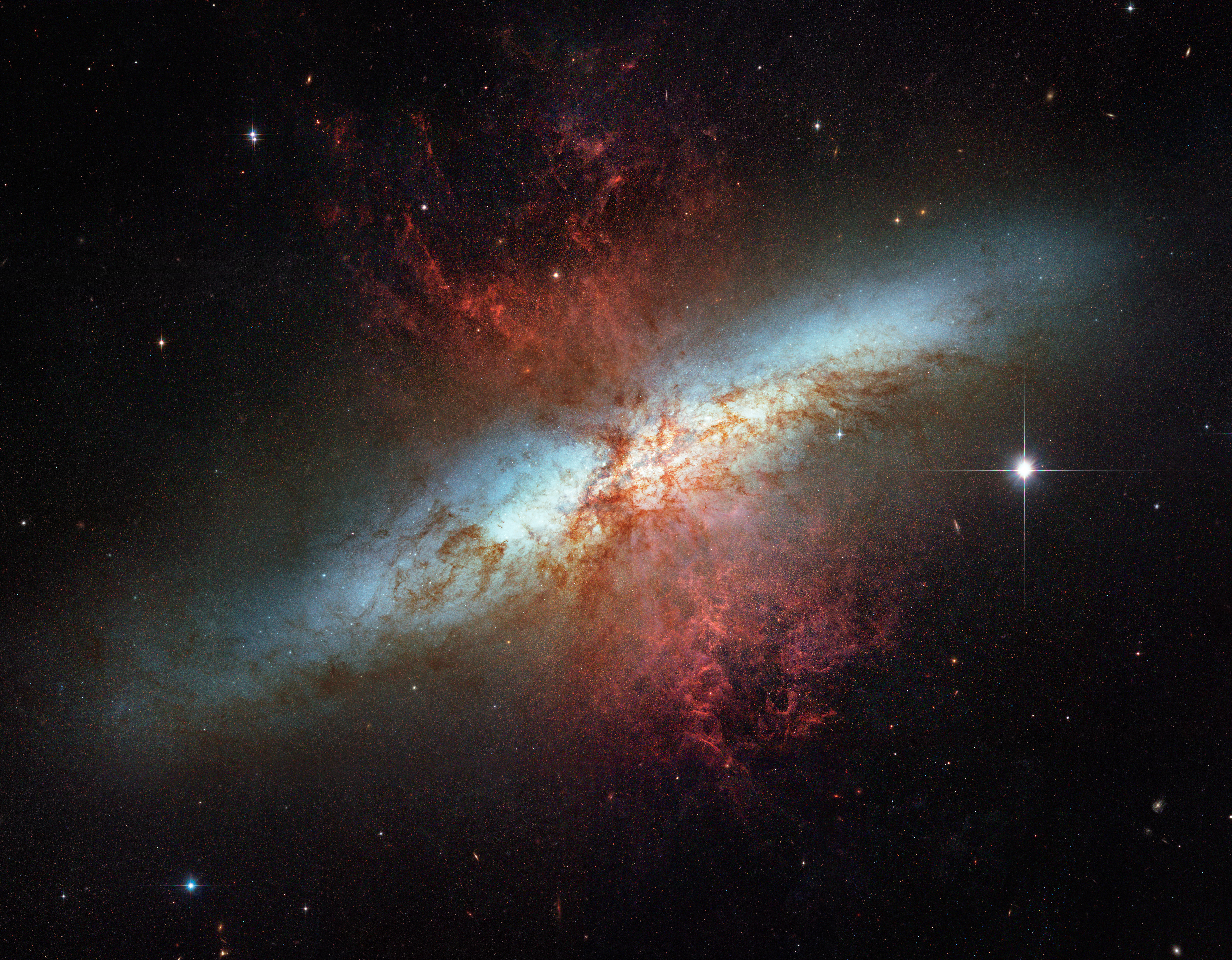
36. Magnificent starburst galaxy Messier 82
This mosaic image of the magnificent starburst galaxy, Messier 82 (M82) is the sharpest wide-angle view ever obtained of M82. It is a galaxy remarkable for its webs of shredded clouds and flame-like plumes of glowing hydrogen blasting out from its central regions where young stars are being born 10 times faster than they are inside in our Milky Way Galaxy.
“The beauty of Hubble is that we continue to make new, unforeseen discoveries. So with every new cycle of observations we are afforded, my answer to that question [of what should be Hubble’s last image target] will likely change.”
Dr. Katherine E. Whitaker
NASA Postdoctoral Program Fellow
Goddard Space Flight Center
Greenbelt, Maryland
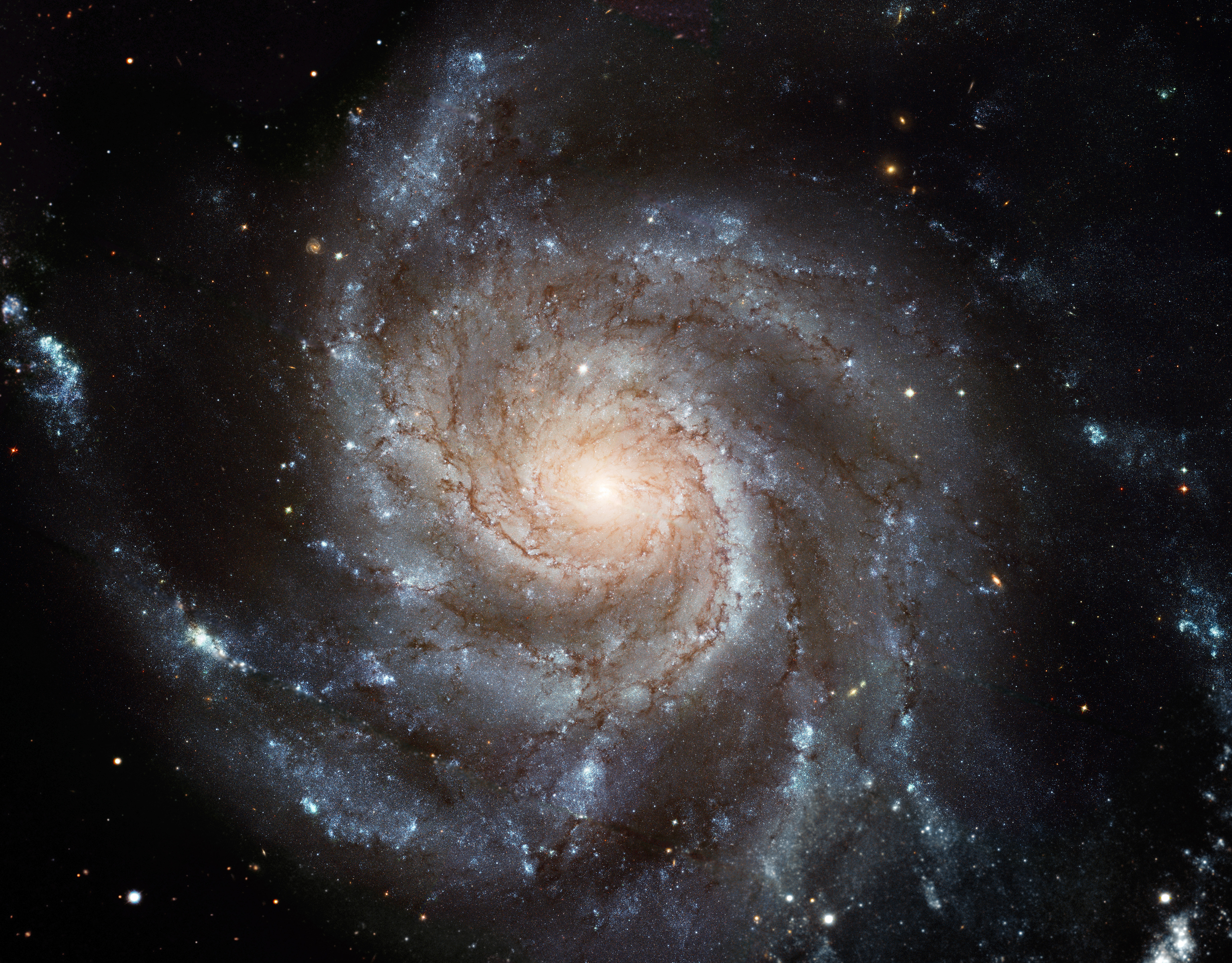
37. Pinwheel galaxy
This image reveals the gigantic Pinwheel galaxy, one of the best known examples of “grand design spirals”, and its supergiant star-forming regions in unprecedented detail. The image is the largest and most detailed photo of a spiral galaxy ever taken with Hubble.
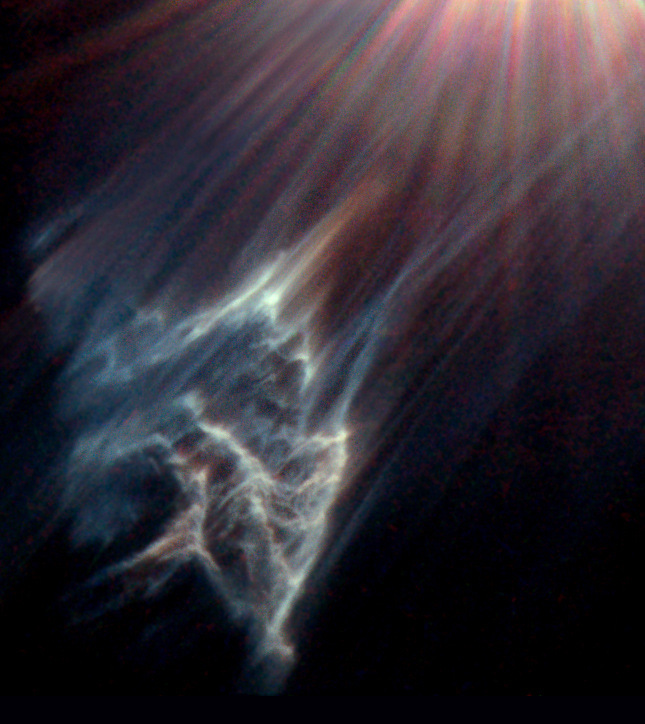
38. Ghostly reflections in the Pleiades
This image shows a dark interstellar cloud ravaged by the passage of Merope, one of the brightest stars in the Pleiades star cluster. Just as a torch beam bounces off the wall of a cave, the star is reflecting light from the surface of pitch-black clouds of cold gas laced with dust. As the nebula approaches Merope, the strong starlight shining on the dust decelerates the dust particles. The nebula is drifting through the cluster at a relative speed of roughly 11 kilometres per second.
The Hubble Space Telescope has caught the eerie, wispy tendrils of a dark interstellar cloud being destroyed by the passage of one of the brightest stars in the Pleiades star cluster. Like a flashlight beam shining off the wall of a cave, the star is reflecting light off the surface of pitch black clouds of cold gas laced with dust. These are called reflection nebulae.
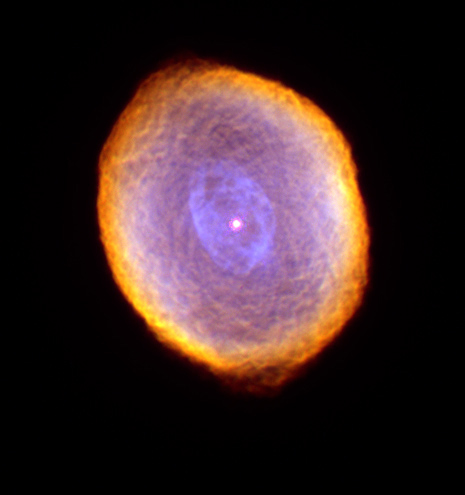
39. Spirograph Nebula
Glowing like a multi-faceted jewel, the planetary nebula IC 418 lies about 2000 light-years from Earth in the constellation Lepus. In this picture, the Hubble telescope reveals some remarkable textures weaving through the nebula. Their origin, however, is still uncertain.
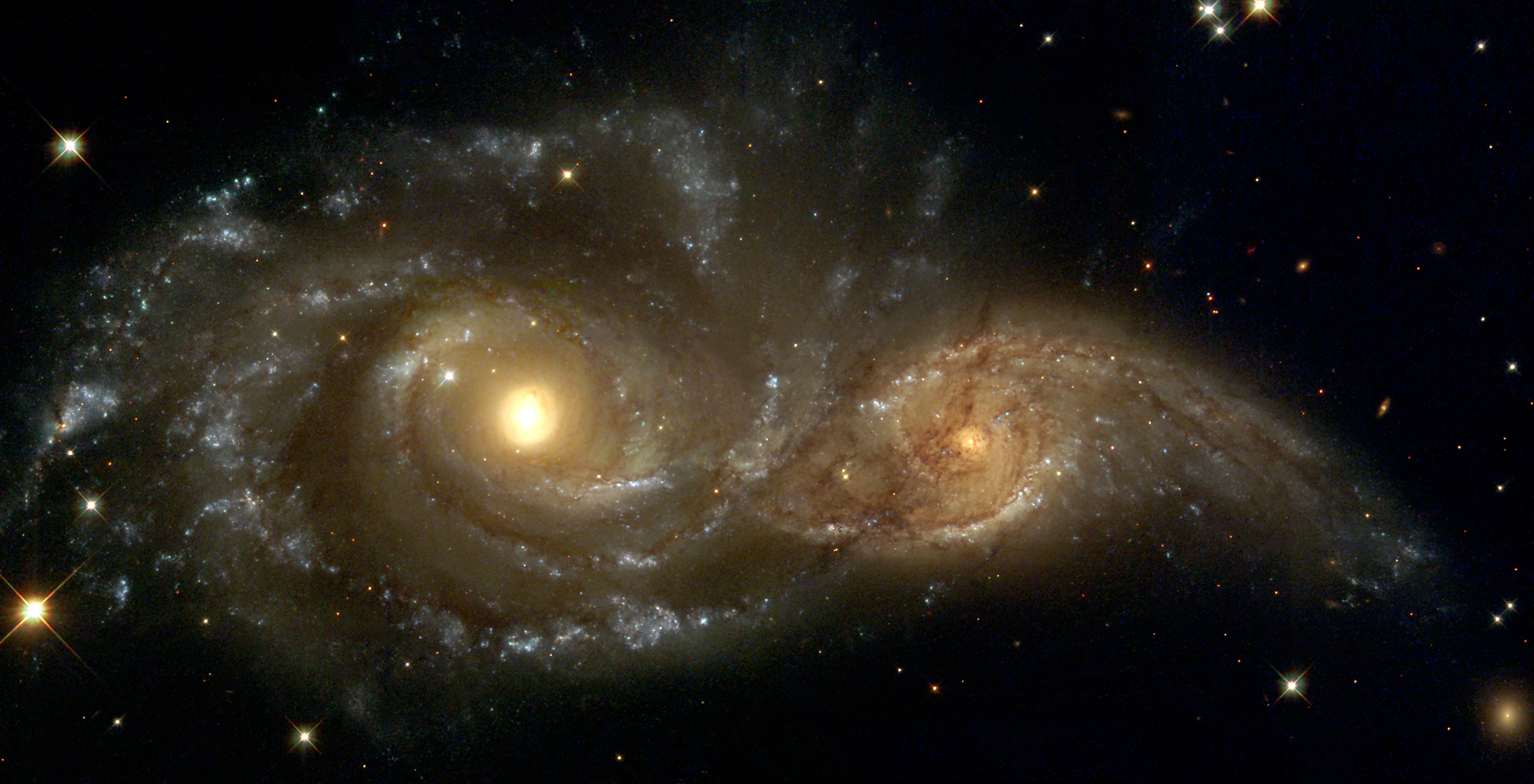
40. Grazing encounter between two spiral galaxies
In the direction of the constellation Canis Major, two spiral galaxies pass by each other like majestic ships in the night. The near-collision has been caught in images taken by the NASA/ESA Hubble Space Telescope and its Wide Field Planetary Camera 2.

